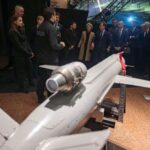
U.S. Air Force development of low-cost unmanned aerial vehicles (UAV) and the Skyborg low-cost attritable demonstrator hold significant promise, yet a key question will be the level of artificial intelligence (AI)-enabled autonomy that the service will afford to such drones. "Low-cost UAVs can add complexity to the thinking, both our thinking and the adversary's thinking because we can proliferate them and make them all a little different," Air Force Chief Scientist Richard Joseph told the Mitchell Institute for Aerospace Studies'…














